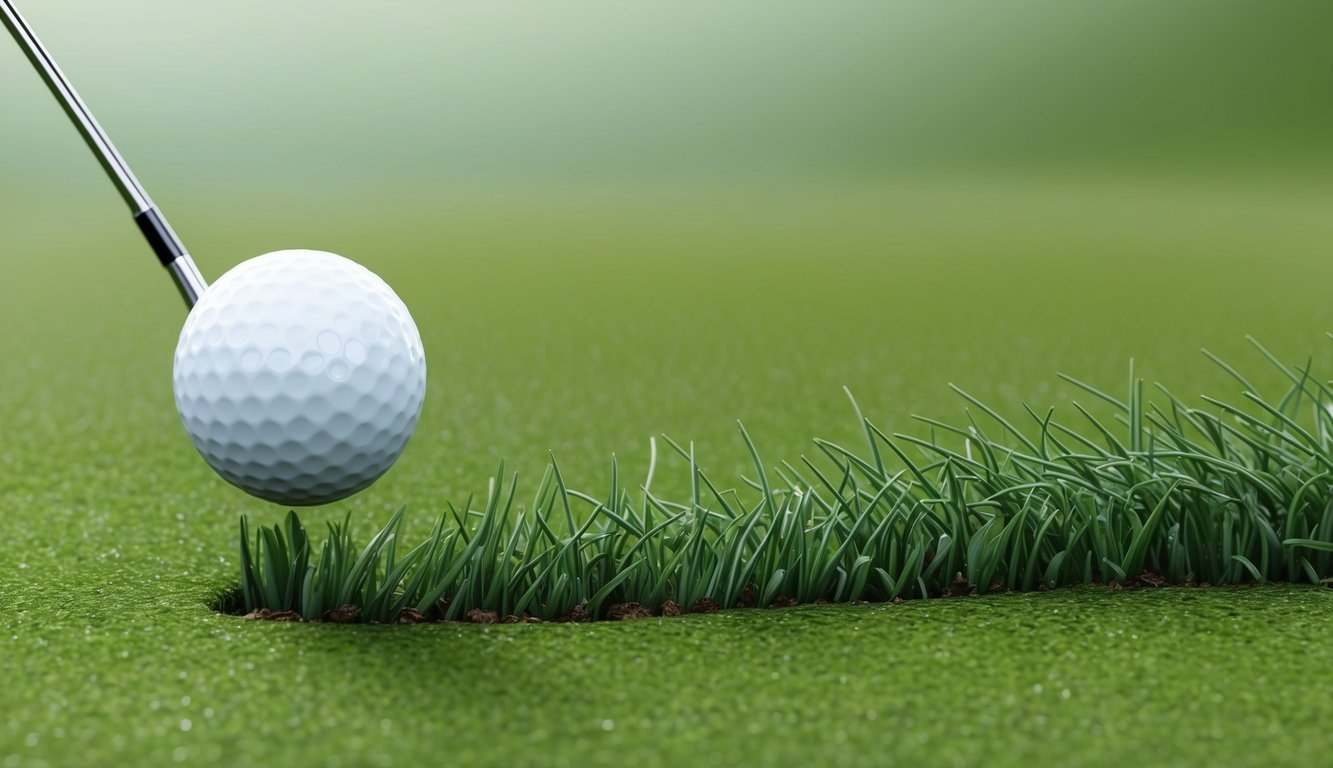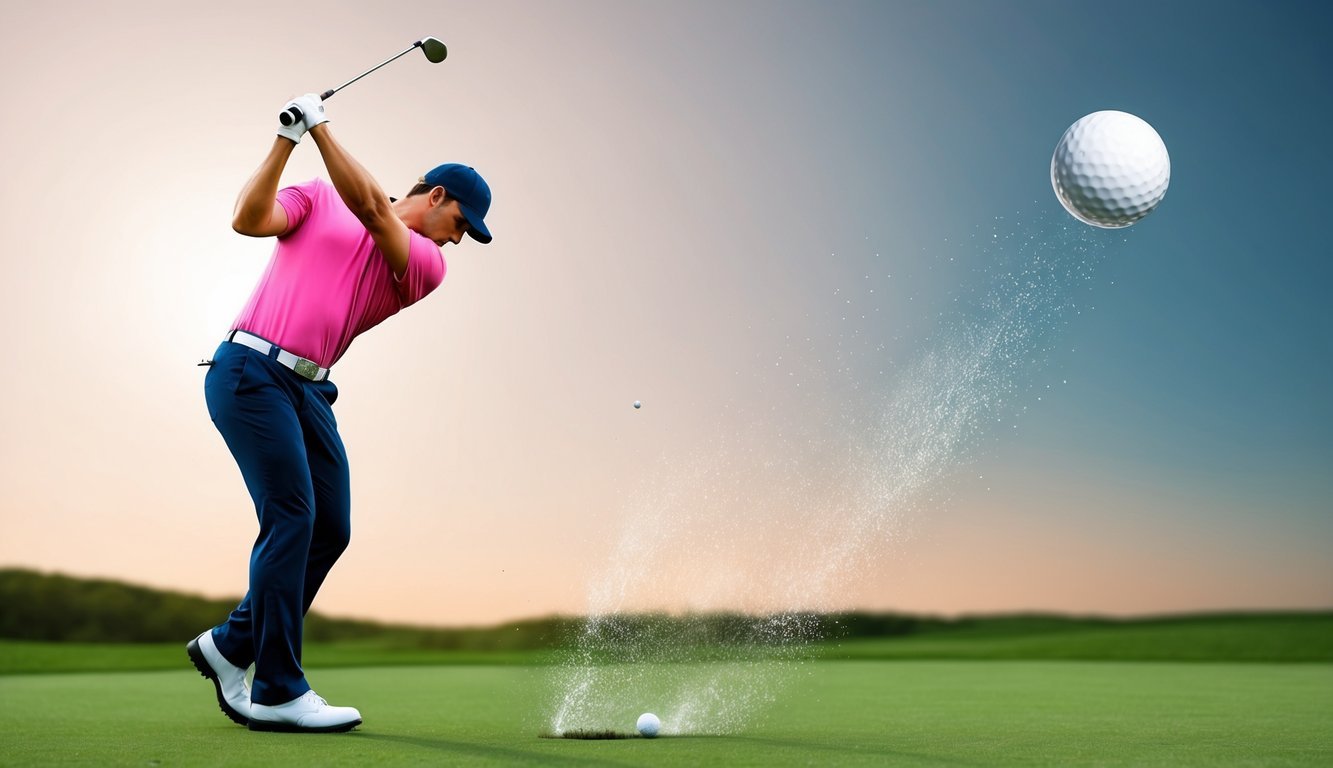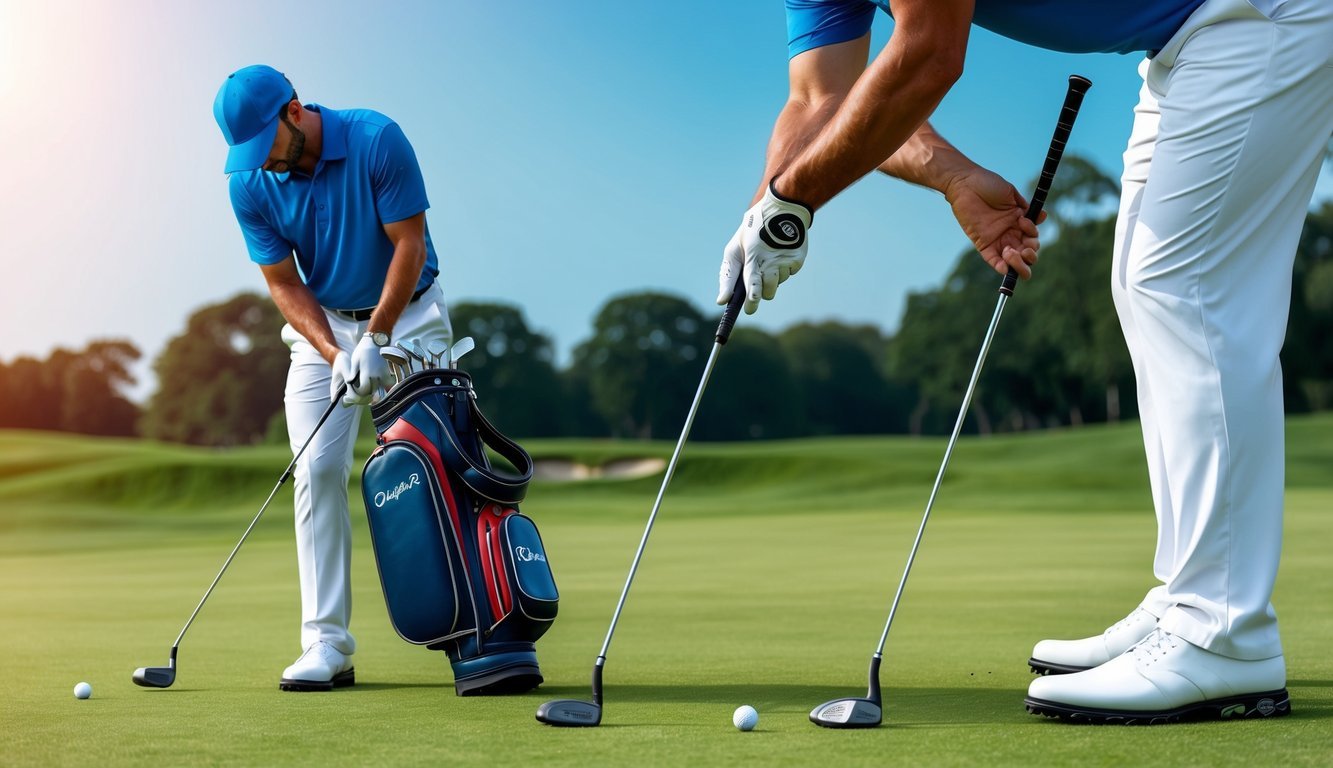Do you struggle with hitting thin golf shots during your game? These pesky shots can be frustrating, causing the ball to skim along the ground rather than fly gracefully through the air. To address this common issue, focus on adjusting your swing mechanics and understanding the root causes behind these mishits. By doing so, you’ll be well on your way to cleaner, more accurate ball striking.

Thin shots often occur when the bottom of your swing arc is too high, causing the club to strike the ball low on the clubface.
This is usually due to a flat swing or improper weight transfer.
Making slight adjustments to your stance and ensuring your weight shifts correctly during the swing can transform your performance and lead to more enjoyable rounds.
Explore simple yet effective strategies to refine your technique and see noticeable improvements on the course.
Whether you’re a seasoned pro or new to the game, these insights can help you achieve more solid contact and increase your confidence with each shot.
Key Takeaways
- Thin shots result from improper swing mechanics.
- Adjust stance and weight transfer for better contact.
- Simple fixes can greatly improve your game.
Understanding Thin Golf Shots
Thin golf shots can hinder your performance on the course.
Learning to identify thin shots and their effects on the ball can improve your game.
Identifying a Thin Shot
A thin shot occurs when the club strikes the ball at or slightly above its equator.
This often results in a low, line-drive trajectory, lacking any significant lift.
You might notice a sharp or harsh feel at impact, often accompanied by a disappointing sound.
To spot a thin shot, watch for the ball skimming off the ground rather than soaring into the air. Monitor your stance and swing to ensure your clubhead isn’t too elevated upon striking.
Maintaining a proper swing arc can help avoid this error and improve accuracy.
Effects on Ball Flight and Distance
When you hit the ball thin, it usually travels on a flatter trajectory, significantly reducing its potential to gain height.
This leads to less carry and rolls further than intended.
Factors like reduced spin and direct air resistance impact distance.
Instead of a gentle descent, a thin shot may result in the ball skipping across the turf.
A common cause is an incorrect ball position.
Adjust by moving the ball slightly back in your stance.
By addressing these factors, you can achieve a more consistent ball flight and maximize your distance.
For more tips, consider reviewing guidance from The Left Rough on how stance and posture affect your swing.
The Mechanics of a Golf Swing
A perfect golf swing relies on precise mechanics that balance power and accuracy.
The swing arc and club path determine the quality of the strike, while maintaining a proper posture and stance establishes a strong foundation for your game.
The Role of Swing Arc and Club Path
Understanding the swing arc and club path is crucial for hitting the ball cleanly.
The swing arc refers to the circular path your club follows during the swing motion.
Keeping a consistent arc ensures that you strike the ball at the correct angle.
This reduces the risk of thin shots.
The club path, which is the direction the clubhead follows, determines the shot’s shape.
Whether it’s straight, hooked, or sliced, controlling the path helps you aim accurately.
During the backswing and downswing, focus on keeping the club on your desired path.
Minor adjustments in your hand position and grip can dramatically improve accuracy and power.
Importance of Posture and Stance
Your posture and stance are foundational in executing a successful golf swing.
Standing with the correct posture involves aligning your spine straight, slightly bending your knees, and ensuring your weight is balanced on the balls of your feet.
This facilitates a smoother and more controlled swing.
The stance begins with your feet shoulder-width apart, helping maintain stability throughout the swing.
It’s important to position the ball in line with your lead foot, which encourages a better strike during the downswing.
Practicing these positions can significantly impact the quality of your shots and help avoid thin hits.
With the right setup, you gain consistent and powerful swings, improving overall performance.
Strategies for Solid Ball Striking

Improving your ball striking involves adjusting ball position, ensuring proper weight distribution during your swing, and consistent practice.
These strategies are designed to help you make solid contact and achieve consistent performance on the course.
Proper Ball Position and Weight Distribution
To achieve solid contact, placing the ball correctly relative to your stance is crucial.
For irons, position the ball slightly ahead of the middle of your stance.
With longer clubs like drivers, move the ball towards your lead foot.
Correct ball placement helps ensure consistent ball-striking.
Weight distribution also plays a key role.
At setup, evenly distribute your weight between both feet.
During your swing, allow a natural weight shift to your lead foot.
This shift enhances power and accuracy, allowing you to hit the ball more effectively.
Achieving Consistent Contact
Achieving consistency requires attention to swing mechanics.
Focus on maintaining a steady head position throughout your swing.
A stable head aids in delivering the clubface squarely to the ball.
This improves your ability to make solid contact.
Additionally, ensure your hands are ahead of the ball at impact.
This position encourages effective ball compression and a downward striking motion.
This technique is essential for creating powerful and accurate shots.
Practice Drills on the Driving Range
Practice at the driving range is essential for honing your ball-striking skills.
One effective drill involves placing a towel a few inches behind your golf ball.
This helps you strike the ball before the ground, promoting solid contact.
Another useful exercise is the “gate drill.” Place two tees slightly wider than your clubhead and practice swinging through them without hitting the tees.
This drill improves your swing path and encourages clean strikes.
Regularly practicing these drills will enhance your muscle memory and consistency, making it easier to replicate on the golf course.
Common Mistakes and Technical Adjustments

Addressing thin golf shots often involves understanding issues like flipping or early release, and swaying with incorrect spine angle.
By making technical adjustments, you can improve your swing and achieve better ball contact.
Addressing Flip and Early Release
Flipping or early release can be a common struggle for many golfers.
This occurs when your wrists break down before impact, leading to inconsistent shots.
One way to counteract this is by focusing on maintaining a strong wrist position through impact.
Practicing with impact drills can reinforce good habits and provide muscle memory.
Additionally, ensure your grip is firm but not overly tight.
A gentle yet secure grip promotes better control and timing, essential for correcting early release tendencies.
Another technique involves using alignment aids to visually track your club’s path, helping ensure a consistent swing plane.
Fixing Sway and Spine Angle Issues
Swaying during your swing and improper spine angle can lead to thin shots and loss of power.
One effective method to address swaying is maintaining a stable lower body throughout your swing.
Keep your weight centered and avoid transferring it excessively to the back foot.
Engaging in balance drills can provide stability and enhance control.
Proper spine angle is crucial.
Ensure your spine remains tilted towards the ball rather than leaning or shifting away.
Practicing in front of a mirror can help you monitor and adjust your posture.
For additional guidance, professional lessons can offer personalized feedback on maintaining the correct angles and positions during your swing.
Advanced Techniques and Tips for Improvement

Enhancing your golf game involves detailed focus on technique and understanding how to utilize equipment effectively.
This section explores the intricacies of wrist movement, weight shifting, and the use of hybrids to improve your performance on the course.
Wrist Hinge and Back Foot Dynamics
Mastering the wrist hinge is crucial for generating the right amount of power in your swing.
Begin by ensuring your wrists are hinged correctly at the setup position.
This allows for a smooth transition through your swing, leading to better control over the clubface during impact.
Keeping your weight balanced on your back foot during the backswing can aid in maintaining stability.
This technique helps in creating a smooth pivot, which is essential for hitting solid iron shots.
By focusing on these wrist and foot dynamics, you’ll find better consistency in your swings and more accuracy in your shots.
Transitioning Weight for Power and Accuracy
Effective weight transfer is key to achieving both power and accuracy.
Start by making a slight shift onto your front foot as you transition from backswing to downswing.
This movement helps in directing your body towards the target, allowing for a more powerful shot.
As you move through the swing, ensure your upper body is aligned correctly over the ball.
Proper alignment contributes significantly to accuracy, ensuring the club strikes the ball cleanly.
Practicing this weight transition will also improve your balance and help in delivering powerful, precise shots consistently.
Using Hybrids for a Higher Trajectory
Hybrids are a versatile addition to your golf bag, offering a more forgiving option for achieving higher trajectory shots.
When using hybrids, position the ball a bit forward in your stance compared to irons.
This setup allows the club to make contact as it begins to rise, helping achieve that desired higher ball flight.
With their unique design, hybrids combine the best features of woods and irons.
This combination results in easier launches and improved control.
By incorporating hybrids into your game strategically, particularly for long fairway shots, you will enhance your ability to reach the green more efficiently.

